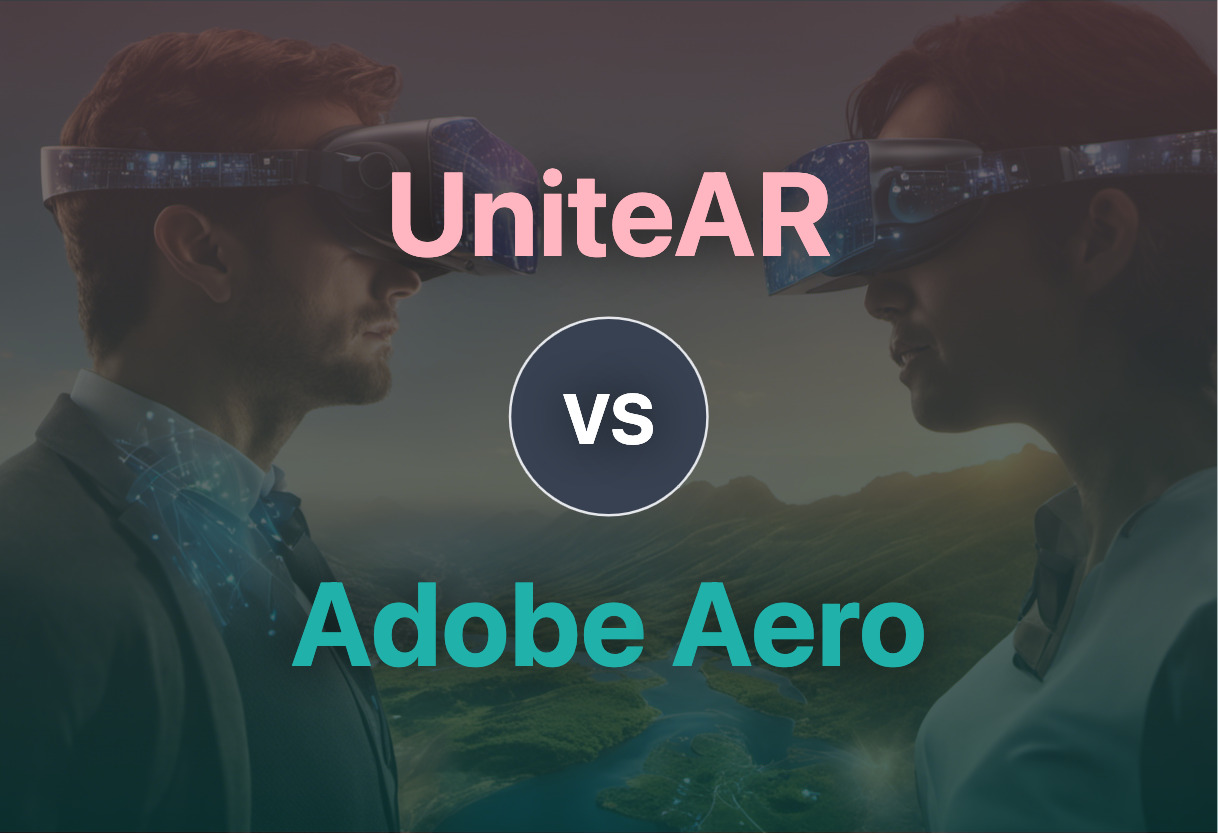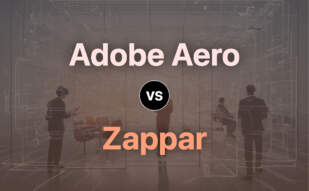For immersive AR experiences, choose UniteAR. It offers a vast library of 3D models and diverse features, needing no coding expertise. Ideal for educators and businesses alike. Adobe Aero, though intuitive and integrated with Adobe Suite, currently serves iOS users and lacks advanced options.

Key Differences Between UniteAR and Adobe Aero
- Platform Compatibility: UniteAR supports iOS, MacOS, and Android, whereas Adobe Aero is iOS-exclusive.
- Feature Diversity: UniteAR detonates with over 100 3D models, 360 aids, interactive options. Adobe Aero keeps it simple, integrated with Adobe suite.
- Coding Requirement: Both offer No-Code solutions for AR development.
- User Data Tracking: UniteAR keeps the user’s data secure, with no tracking involved.
| Comparison | UniteAR | Adobe Aero |
|---|---|---|
| AR Capabilities | 3D models, 360-degree content, videos, animated gifs, image slideshows | Creation of interactive experiences, behavioral content triggers, object motion paths |
| Coding Knowledge Required | No | No |
| Platform Compatibility | iOS 11.1 or later, MacOS 11.0 or later | iOS 16+ |
| SaaS Platform | Yes, offers white-labeled AR Apps, AR experiences, WebAR plugins | No |
| Applications | Marketing, Advertising, Education | Artists, Educators, Marketers |
| Audience | Educators, creators, businesses, enterprises | Artists, Educators, Marketers |
| Integrations | Ratings/Reviews | Adobe Photoshop, Illustrator, other Adobe Creative Cloud applications |
What Is UniteAR and Who’s It For?
UniteAR is a potent platform that unleashes the incredible power of augmented reality. Developed by iBoson Innovations, this platform offers a treasure trove of engaging and immersive experiences through a free app. UniteAR is a haven for over 100 3D models courtesy of the AR gallery. Its core features include an array of 3D models, 360-degree content, videos, animated gifs, and image slideshows.
Designed for educators, creators, and businesses who want to craft custom AR experiences without requiring any coding knowledge, UniteAR straddles the worlds of marketing, advertising, and education with aplomb. If you’re looking for instant AR app creation for Android or iOS, UniteAR has got you covered.

Pros of UniteAR
- No coding required for creating custom AR experiences
- Extensive 3D model gallery
- Compatible across multiple platforms
- Robust privacy practices
Cons of UniteAR
- Potential issues with transparent GIF files
- Limited languages supported
- Less number of integrations compared to competitors
What Is Adobe Aero and Who’s It For?
Adobe Aero sets the bar high as an AR creation tool that demands no coding or 3D design expertise. It fits perfectly in Adobe’s stellar lineup, integrating seamlessly with Adobe Photoshop, Illustrator, and other Creative Cloud applications. Users can create intuitive and interactive AR experiences using easy gestures for asset placement, rotation, and scale.
Geared towards artists, educators, and marketers who yearn for a gateway to creativity, Adobe Aero simplifies the AR development process. Despite some limitations and bugs, users show high appreciation for its potential.

Pros of Adobe Aero
- Seamless integration with Adobe Creative Cloud suite
- Intuitive and user-friendly interface
- Enables creation of interactive experiences
Cons of Adobe Aero
- Exclusively available for iOS devices
- Lacks advanced features of other AR platforms
- Backup is necessary due to occasional failure to open projects
UniteAR vs Adobe Aero: Pricing
While UniteAR offers both a free version and a free trial, Adobe Aero’s pricing remains undisclosed.
UniteAR
UniteAR provides an accessible entry point in AR immersion with a complimentary version and a free trial. Despite the generosity of offering both free access and trial, the specifics concerning premium packages, upgrades, or in-app purchases have been left undisclosed.
Adobe Aero
Adobe Aero, rated as a blend of simplicity and creativity, lacks explicit information on pricing. No elucidations are asserted on cost-free or paid tiers, implying potential subscription-based or purchase options to access advanced features or additional resources.
The Verdict: UniteAR vs. Adobe Aero – Which Reigns Supreme?
In the realm of Augmented Reality (AR), two prominent technologies come to play – UniteAR and Adobe Aero. Let’s dismantle the pros and cons, guiding different audience segments towards the fitting choice.
Developers
For developers, especially those aiming for engaging and immersive experiences, UniteAR offers a hefty load of features and a vast library of 3D Models. More so, no coding experience is required, making it a suitable choice if coding isn’t your forte.

Educators
Educators, seeking a vibrant way to captivate students, might find Adobe Aero more fitting. With easy integration to Adobe’s Creative Cloud applications, it offers a seamless workflow for creating and sharing educational AR experiences.

Marketers
Marketers looking for white-labeled AR apps should gravitate towards UniteAR. Its potential for custom AR experiences and Instant AR app creation can lead to impressive, brand-specific AR content, thus elevating marketing game.

In the UniteAR vs Adobe Aero showdown, both offer unique strengths. For code-free immersive experiences, UniteAR proves superior. Yet, for Creative Cloud enthusiasts, Aero takes the laurel. Decide basing on your audience, goals and preference.
Grant Sullivan
Content writer @ Aircada and self proclaimed board game strategist by day, AI developer by night.





